Kiev, Dubai, Hong-Kong: Challenges of the Third Decade
In May 2013 Kiev hosted an interesting Conference “Outdoor Advertising in Ukraine: Challenges of the Third Decade”. Screens Magazine was invited to observe, present a report and mingle which we considered an interesting opportunity to get a firsthand experience in Ukrainian digital environment.
The majority of participants represented traditional advertising companies and supported traditional opinions that are basically reduced to the following strategy:
- Increase the number of advertising surfaces as much as possible;
- Eliminate competitors leaving 2-3 players in the field.
This is the desired state for such companies, the efficiency will be ensured by the monopolistic number of advertising surfaces, and nobody cares about the city environment and cluttering of public space with invasive billboards. This is the main principle governing so far the advertising policy in Russia and the USA. Most such companies forget that the cluttered space is annoying both at home and outside and the advertising efficiency suffers.
Luckily, the Ukrainian approach was different. The site for the Conference was selected well: Premier-Palace hotel in downtown Kiev served as an excellent model for the main Conference message. The hotel is well-equipped with digital advertising screens, thus following in the trendy footsteps of the many progressive and forward-looking cities, such as Hong-Kong, Beijing, Shanghai, London, Tokyo etc.
Specifically, the advertising trends there attempt to:
- Expand functionality of OOH advertising displays;
- Turn advertising structures into permanent and eye-pleasing city furniture;
- Combine various networks (both indoor and outdoor) into a new digital mass-media: DOOH-OOH.
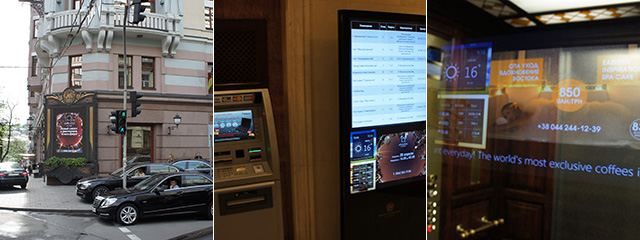
Example of the unified informational space created with digital outdoor screens and indoor displays
The photos show a LED video billboard at the hotel entrance that complements the architecture of the building and looks good on the background of the surrounding space. The screen displays information about hotel events and services, about restaurants and kitchen specialties. The hotel lobby features both static and digital advertising, focused on hotel clients and cleverly selected as to be useful and well-presented. All lifts are equipped with advertising and informational displays.
The moment you step out of the lift you see more LCD screens at all hotel floors. As a result, a person inside the hotel building is surrounded by a certain informational field from the time a person approaches the building and to the moment he enters his room. And all that static and dynamic advertising is placed strategically and does not annoy. Obviously, this is a result of a well-planned creative approach to OOH advertising that was approved by architects, designers and psychologists.
So, Premier-Palace hotel is a pleasant exception from the rule that is sadly still prevalent in Russia and Ukraine: the task of creating a unified informational space is rarely resolved so effectively and elegantly.
Compare for example any underground passage or metro carriage in Kiev: you will see the impossible number of chaotically placed advertising signs, a forest of static boards near metro entrances, unappetizing displays in heavy metal boxes covered with additional advertising stickers on all sides.
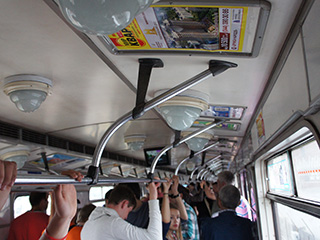 |
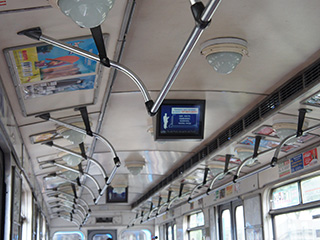 |
| Chaotic advertising stickers and monitors in Kiev metro | |
The approach to designing and advertising environment in Premier-Palace hotel is impressive and serves as a good example for others.
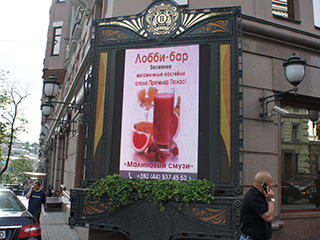 |
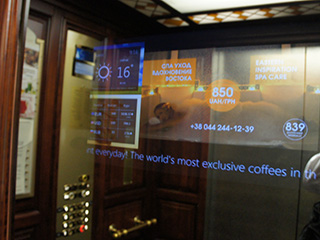 |
| Outdoor video billboard and behind-the-glass LCD display in the lift of the Premiere Hotel in Kiev | |
Impressive were the issues raised at the Conference, the list of guests and excellent quality of most of the reports. Obviously, the organizers – The Ukrainian Outdoor Advertisers Association, Ukrainian Advertising Coalition, Social Advertising Exchange, The Transport Advertising Union, Sostav.ua, Mediabusiness.com.ua, OOH Mag – made an effort to turn a local conference into an important international event, invited presenters from all spheres of the advertising world, attempted to tackle a wide range of issues in the area of creative technology, innovation and tradition, static and digital approaches.
There is no need to reprint the reports; you may easily find them all on the Internet. But some presentations need comment. For example, a report by Stuart Nicolson, Director of Network Communication at Zenithoptimedia Worldwide “The Big Picture: Changing consumer expectations, challenges to the advertising media, future of OOH” gave an overview of the latest trends in interactive OOH technologies. Stuart Nicolson described how lucky we all were to live in a digital world when measuring the influence of advertising technologies on clientele became fast and affordable.
 |
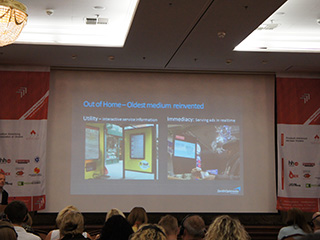 |
| Stuart Nicolson makes his presentation at the Kiev Conference | |
Albert Asseraf, Strategic Marketing Research Director at JCDecaux (France), Professor at Sorbonne University, arrived with a report on “Research and Innovation in Outdoor Advertising as a Basis for the Future”. Since the majority of Conference guests were from the traditional static advertising companies, Prof. Asseraf concentrated on new JCDecaux solutions for static advertising.
From the leading expert in this area, the message to develop static advertising sounded strange and contradicted to the efforts of JCDecaux to promote a multilateral approach to advertising in all areas of the world. Take for example, recent projects at Dubai airport or Hong-Kong MTR (metro) that creatively combined multiple digital LED and LCD screens with traditional static advertising.
What is important is that JCDecaux strives not so much to implement the latest innovations, as to effectively solve the problem of its customer. The proportion of dynamic and static advertising is determined based on the task by marketing specialists. An appealing combination of different approaches – static and dynamic – makes advertising campaigns effective and positively affects the potential customers. All over the world JCDecaux creates a new advertising environment that will stay with us for many years to come.
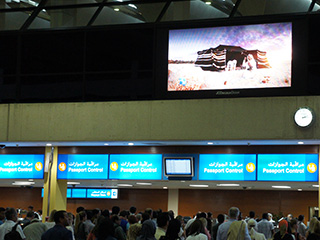 |
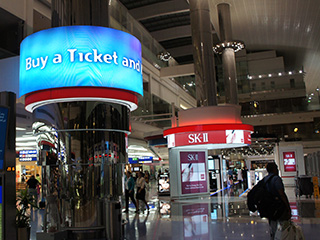 |
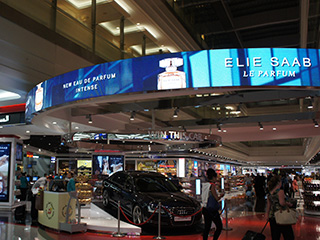 |
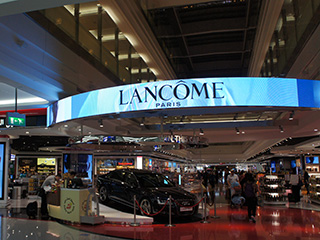 |
| LED and LCD screens at Dubai airport – Project by JCDecaux | |
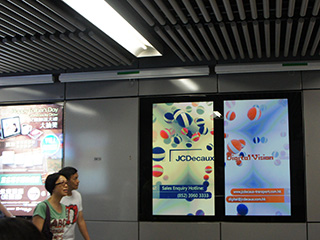 |
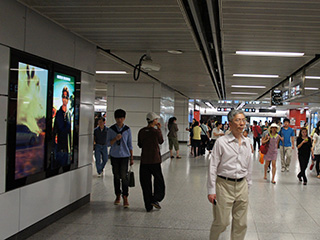 |
| JCDecaux-run project of digital interactive advertising in Hong-Kong metro | |
Albert Asseraf devoted part of his presentation to creative messaging in OOH. How should a static message or digital picture look? How should we select shapes and forms, colors and fonts, angles and places for new OOH advertising? All these questions were answered and demonstrated with already implemented projects.
JCDecaux is one of the few companies that follows a revolutionary road of building new advertising environment. The company recently set up a whole new division that is tasked with studying OOH advertising messages, teaching OOH and DOOH specialists to effectively create static and dynamic advertising content.
In doing this, JCDecaux follows the examples of famous movie directors who also worked in the area of advertising: for example, Jean-Luc Godard (2008), James Benning (2009) or Apichatpong Virasetakul (2010). They proved that an advertising clip for cinema halls, TV sets and OOH areas (if we consider its efficiency) should differ in format and content, in creative and artistic approaches.
A film in a cinema and on a TV is made of a sequence of frames. But the environment in which the clip is presented differs greatly. That is why transferring TV clips into the DOOH media is not always effective. Changes must be made; specialists must adjust the artistic and social aspects of the advertising space. Similarly, not every advertising from a glossy magazine can be automatically transferred to an outdoor billboard.
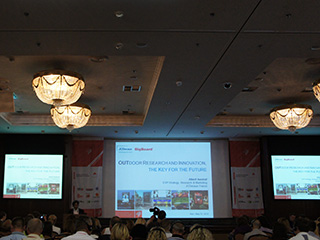 |
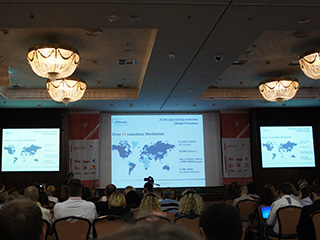 |
| Alber Asseraf delivers his report at the Kiev Conference | |
Andrew Kinsel from Atlantic Group presented an interesting and inspiring report on “Outdoor advertising: Internet and Efficient Integration Tool”. He demonstrated several useful Internet applications that allow to easily and quickly plan an advertising campaign without leaving your house. He proved that a well-planned OOH campaign may be may be even more efficient than a similar TV-based campaign.
We certainly urge our readers to look through some other reports at the Conference that could be accessed through oohconference.kiev.ua web-site. One topic was mentioned repeatedly during the conference: the social responsibility of outdoor advertisers.
Less than a week after the Conference the company HITECH Advertisement (frequently mentioned during Conference proceedings in relation with socially-focused cases) announced its socially-focused advertising project in cooperation with the Ukrainian Ministry of Emergency Situations. Marketing Director of HITECH Advertisement Sergey Fedorenko said “We responded to the initiative of the Ministry of Emergency Situations immediately. Socially-oriented advertising is essential to people especially in emergency situations. People must know where to go, where to call in emergency”.
Previously HITECH Advertisement implemented an important and popular Internet-based project in Russia together with the search engine company Yandex: an interactive Yandex-Traffic Jams project. Projects like these prove that none of the traditional advertisers with their thousands of advertising surfaces are capable to implement new socially-oriented projects that are currently in great demand.
OOH screen acquire new ideological importance in times of significant events: for example, at the time when Chinese astronauts (taikonauts) were successfully launched in space, in China all outdoor media screens – in public buildings, in transport, in entertainment complexes, etc – showed images of the launch and official comments in daily news.
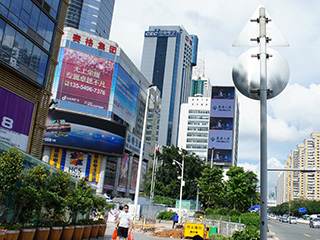 |
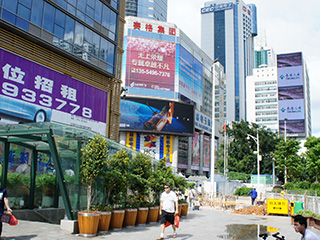 |
| Broadcast of news about Chinese astronauts in space on city LED screens in China | |
Part-time utilization of private advertising digital OOH resources for the needs of municipal and federal authorities became a rule for all Chinese advertisers about two years ago.
It seems that Kiev authorities understand the need of merging commercial and public informational needs and wish to support this in the city and promote the trend to the whole of the Ukraine.
This utterly modern and useful approach is now being implemented in the Ukraine, following the example of the USA with its Amber Alert Program (search for missing persons), England (Amscreen network initiative), China and Russia (AstraVision Network initiative in St Petersburg), etc. In all these cases digital billboards are used as multifunctional systems, as part of the informational outdoor media, as a new digital environment of modern cities.
Vladimir Krylov talked about “Modern Trends in OOH: Transition from Static to Dynamic Advertising”. This tendency however does not mean that static advertising is dying. Yes, digital advertising expands in proportion while static advertising is gradually losing ground. However, at some point soon these two “adversaries” will reach equilibrium and start working together complementing each other. Today modern cities need balanced approach to advertising that would combine architectural solutions, creative and artistically pleasing content. Unfortunately, such balanced approach we have seen only in major Chinese cities where the interaction of the city environment and advertising is structured according to the feng shui principle.
Feng shui (means “water and wind”) is an accepted practice of adapting the living space. Feng shui principle will help you find a good place for a house, make proper arrangement of furniture. A feng shui specialist may even predict events based the favorable flows of energy and their influence on people.”
In China, Japan and Singapore advertising is taken seriously, not only as a tool for making money but as an important part of our daily life and environment. Therefore, advertising there is mostly balanced, organically interacting with the surrounding territory. Even the seemingly chaotic flashing of advertising in Chinese market areas is strictly organized and controlled. The overall effect is that of a harmony that is helpful and informative.
China has a lot of advertising structures, both static and dynamic, especially in downtown areas, on street crossings and in public marketing zones. But all modern redesigned areas are looking deceptively free-of-advertising. The advertising is not invasive, but at the same time can be easily found when necessary. A lot of advertising structures are unusual in shape and format, created with special care to preserve aesthetics of the environment.
Examples of city LED screens in Shenzhen (almost 2 thousand km from Beijing)
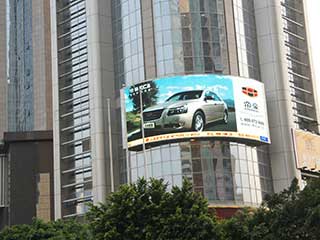 |
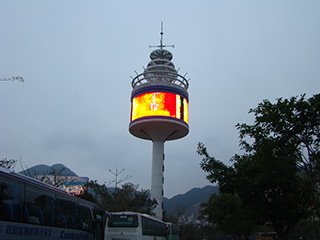 |
| Curved outdoor LED screen in Shenzhen | Circular 360 degree screen in Shenzhen |
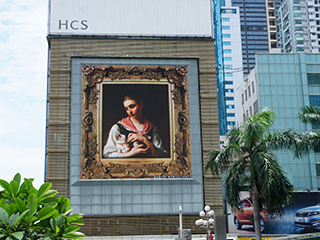 |
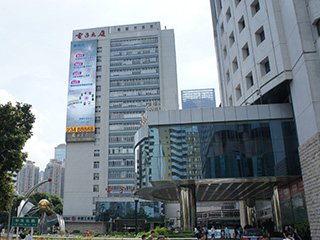 |
| A stand with LED screen in Shenzhen | LED screen of a building façade in Shenzhen |
Getting back to the topic of the Conference, we must stress that the organizers are obviously concerned with searching for new solutions that would not be simple or primitive. The negative example of Russian revolutionary approach (dismantle the existing advertising system almost completely – and start building it up again with the purpose of changing ownership) motivated organizers to deep thinking and long-term planning. Advertising system should be a tool in political and economic games but should be a useful marketing and social tool for the benefit of everyone living in a city.
As if to prove this point, Yuri Charukh, President of the Industrial Committee for the Outdoor Advertising, said: “The market and the whole country have to make a choice between intensive and extensive paths of development. We plan to follow the European approach in outdoor advertising. The Conference answers a lot of questions on how to structure our future advertising system. We are ready to change and reform the advertising field: to create new workplaces, to implement modern technology. What we need at present is the support of municipal and federal authorities.”
At the Conference all experts (from Ukraine, Russia and European Union) agreed that OOH – DOOH is close to TV in effectiveness and influence of consumer behavior. What seemed a distant future only a couple years ago has become our reality: outdoor advertising maybe called a new media. And as a new media it has to be structured and regulated with much planning and attention to detail, especially concerning the content.
From the beginning the Conference organizers pose some controversial questions to all its participants asking for everyone’s contribution during general opinion poll: who is right and who is wrong (bureaucrats or monopolists), what style will prevail (digital or static), whose opinion is valid (that of the public or that of advertisers). This helped turn the Conference into a serious platform of exchanging professional opinions and a stage for informal interaction between representatives of different spheres.
The result is predictable: the balance opinions prevail; people agree that future advertising will consist of both static and digital displays, as long as it is well-planned, manufactured with the view towards beauty and harmony, and the advertising content remains eye-pleasing and attractive. What Ukraine is only dreaming about, China has already implemented on a country-wide scale. So, a short (10-hour) trip to China may open your eyes to the future of the industry.
Below is the compilation of photographs from different places and areas, but all of them prove the point of the article – whether indoor or outdoor the advertising should not be offensive to the eye and should be aesthetically pleasing.
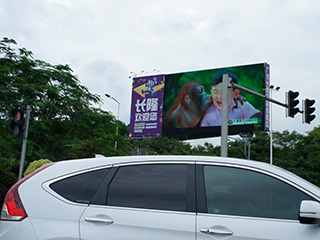 |
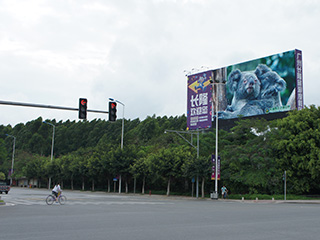 |
| Combination of digital and static advertising at a street crossing in Guangzhou | |
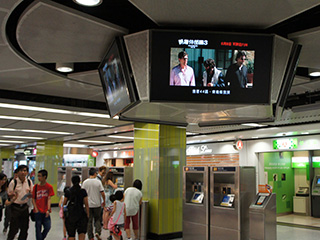 |
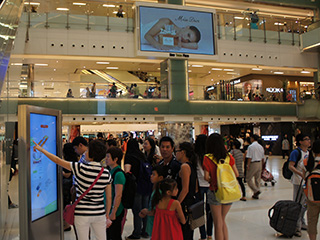 |
| Combination of LCD and LED displays in metro and commercial centers in Hong-Kong | |
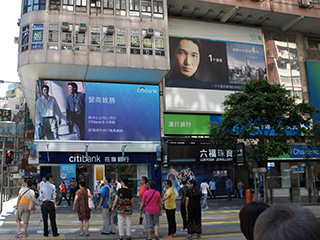 |
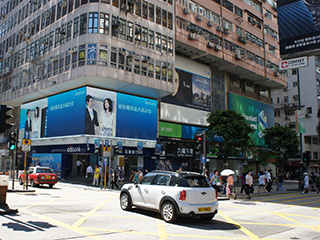 |
| Combination of static billboards and LED displays in Hong-Kong streets | |
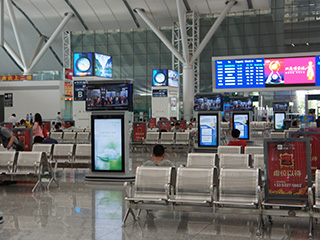 |
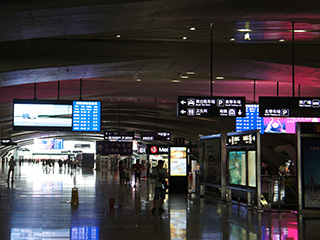 |
| Digital and static advertising at railway terminals | |
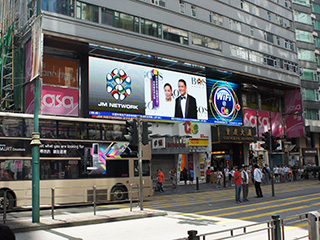 |
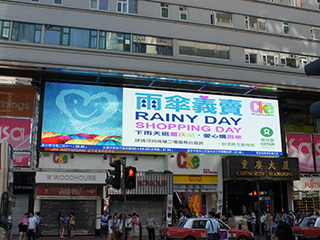 |
| Utilization of static and digital advertising approach in commercial centers in Hong-Kong | |
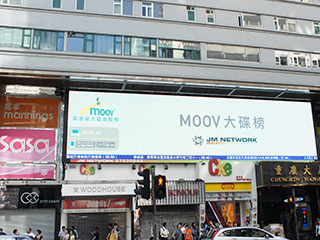 |
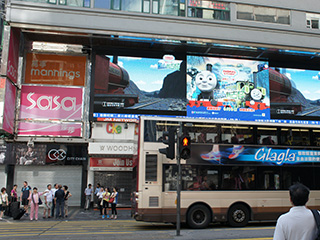 |
| Creative advertising on digital screens in Hong-Kong | |





